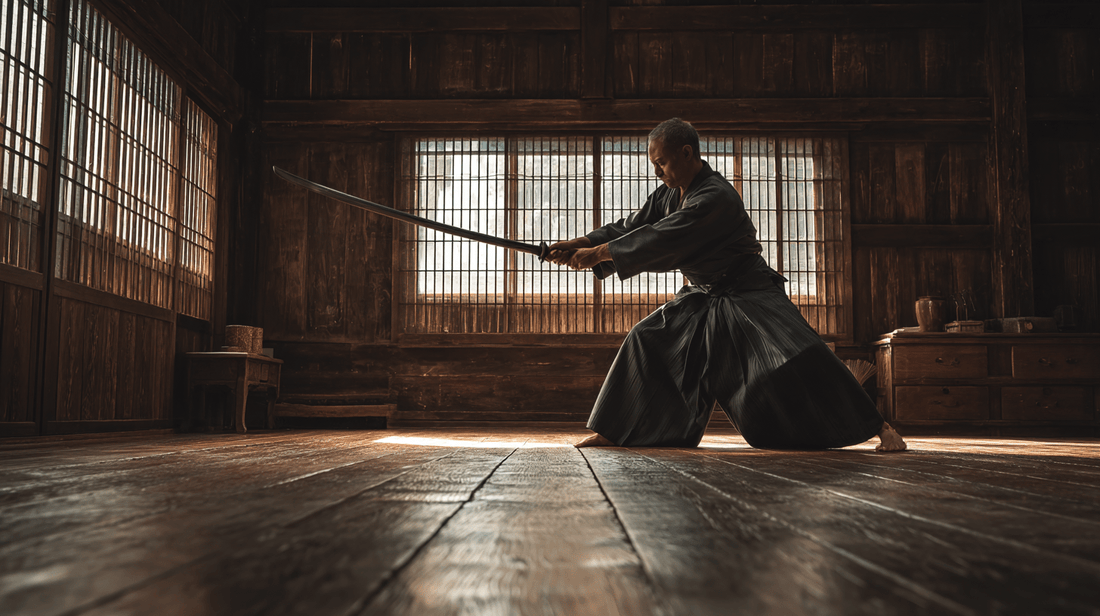
How to Safely Handle and Swing a Katana
Share
Learning how to safely swing a katana is essential for martial artists, collectors, and enthusiasts alike. The katana is not just a decorative object—it's a real weapon that demands respect, proper grip, and technique. In this guide, we’ll walk you through the fundamentals of safe katana handling, offering key sword handling tips to avoid injury and improve control.
Why Safety Matters with Katanas
Whether your katana is a sharpened functional blade or a high-quality replica, mishandling can lead to accidents. Unlike foam or bamboo training swords, real katanas have significant weight and a sharp edge. Practicing safe techniques minimizes the risk of injury and protects your surroundings.
Proper Katana Grip and Stance
Safe swinging begins with the correct grip and posture. Follow these steps:
- Two-Handed Grip: Place your dominant hand near the guard (tsuba) and the non-dominant hand near the base of the handle (kashira).
- Relaxed Wrists: Avoid a death grip—tense hands reduce control and increase fatigue.
- Stable Stance: Stand with your feet shoulder-width apart, knees slightly bent, and your weight evenly distributed.
This stance offers balance and allows for fluid movement during cuts or drills.
Beginner Techniques for Safe Swinging
Before attempting complex moves, master these basic motions:
- Kesa-giri: A diagonal cut from the shoulder to the opposite hip
- Shomen-uchi: A vertical overhead cut, ideal for practicing control and trajectory
- Do-giri: A horizontal body-level cut used in traditional drills
Practice slowly and with intent. Using a clean, well-maintained blade also ensures your safety during handling.
Tips to Prevent Injuries
Here are crucial katana grip safety practices every practitioner should follow:
- Never swing a katana near people, pets, or fragile objects
- Warm up your wrists and shoulders before training
- Always sheath the katana when not in use
- Use a blunt training blade (iaito or bokken) for initial practice
Display your blade securely with a stand or wall mount to reduce handling and accidental drops.
Safe Storage and Maintenance
After every practice session, ensure your katana is clean and stored properly. Here’s how:
- Wipe the blade with a soft cloth to remove moisture
- Apply sword oil to prevent rust
- Keep the katana in a dry environment, preferably in a saya (scabbard)
Browse our accessory collection for essential maintenance tools and safe storage solutions.
Practicing in a Controlled Environment
Choose a clear, open area with enough room for full swings. If indoors, avoid low ceilings or narrow hallways. Practicing in a dojo or designated training space is ideal. Ensure you’re not wearing loose clothing or jewelry that might catch on the sword.
Conclusion
Mastering how to safely handle and swing a katana is about discipline, respect, and awareness. Start slow, focus on technique, and build muscle memory before increasing speed or strength. The katana is more than a blade—it’s a symbol of tradition, and using it responsibly honors that heritage.
Explore our wide selection of handcrafted katanas and maintenance kits to support your journey with confidence.
FAQ: Safe Katana Handling
Q: Can I train with a sharp katana as a beginner?
No. Start with a blunt training sword (iaito) or wooden bokken to learn basic techniques safely.
Q: How do I know if my grip is correct?
Your hands should be relaxed but firm. If you're feeling pain or losing control, your grip may need adjustment.
Q: Is it safe to swing a katana indoors?
Only if you have a large, open space with no obstructions. Otherwise, train outdoors or in a dojo.
